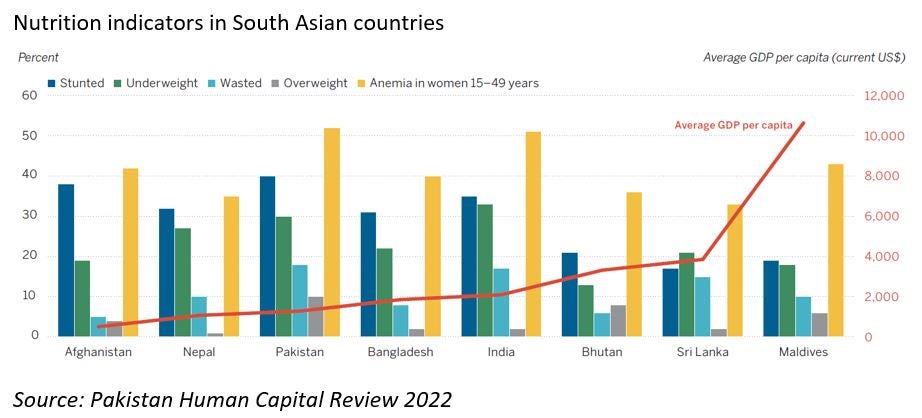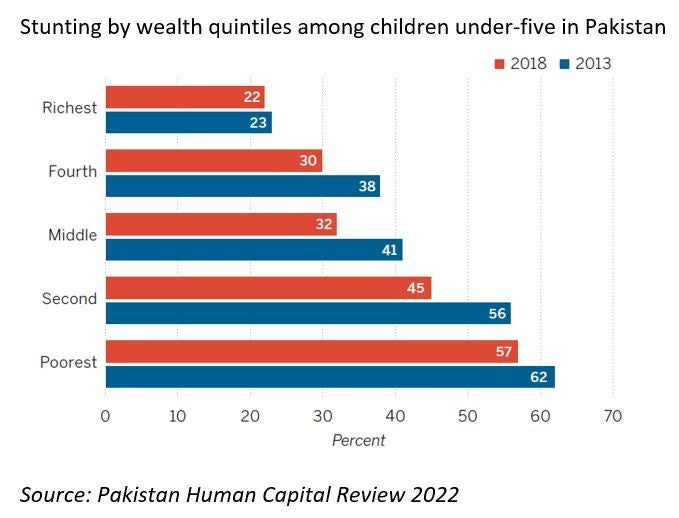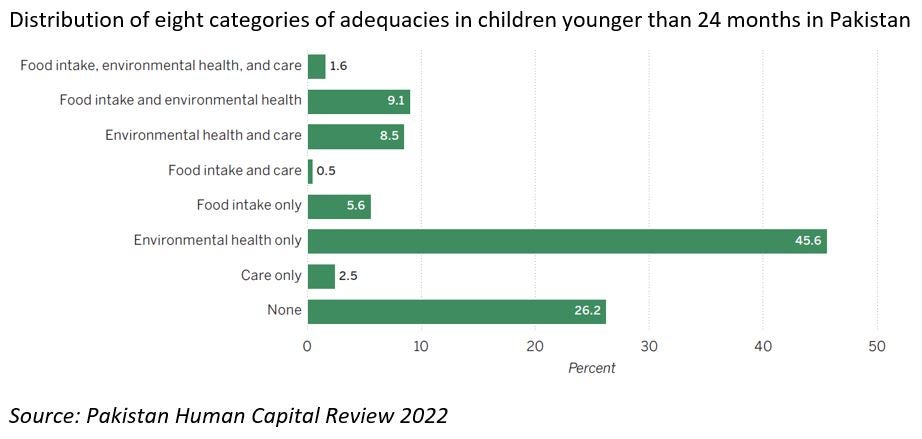 Baby under a mosquito net
Baby under a mosquito net
After a three-hour trip with her grandmother and father, a frail 2-year-old Ayesha waits under a scrubby tree for a mobile health team to arrive. There is a local Lady Health Worker in their village. But competing priorities and lack of resources renders her unable to address Ayesha’s needs, or the health needs of several others in the village.
Over 40 percent of Pakistan’s under-five children are stunted, as compared to the South Asian average of 31 percent. Stunting is most closely associated with brain development and physical growth and may render long term mental and physical impacts for the child thereby depriving them of the ability to live a fulfilling life.
This has lifelong and even intergenerational consequences for individuals—and nations. Now, more than ever before, Pakistan’s nutrition should not be overlooked.

Unfortunately, the picture continues to grow grim. The rate of reduction in stunting is extremely low, at just 0.5 percent per annum since 2011 - much less than the global target of 3.9 percent reduction per annum. And the prevalence is high even in rich households, indicating that stunting is not just a poverty issue.

Food intake, environmental health, and care for children and women are the three main determinants of stunting at the most immediate level. Very few of Pakistan’s young children have adequacy in all these three dimensions, and the proportion of children with multiple adequacies is as low as 1.6 percent.

Environmental instances including the recent catastrophic flooding and the locust attacks have further exacerbated dire levels of childhood stunting. 32 districts in Balochistan, 20 in Sindh, and 17 in Khyber Pakhtunkhwa and the Newly Merged Districts notified as “calamity hit” reported nearly 48 percent stunting in under-five children. Monetary losses due to locusts in 2020 and 2021 are predicted to cause acute food insecurity in 3 million additional people. The COVID-19 pandemic also caused disruptions in the provision and use of basic health and nutrition services and increased food insecurity in 40-60 million people, setting back Pakistan’s efforts to reduce stunting.
Pakistan’s heightened nutritional needs represent a humanitarian crisis and a key development challenge delaying the anticipated demographic dividend. Stunting causes high healthcare expenses, illnesses, deaths, decreased physical productivity and impaired cognitive learning, and up to a phenomenal 46 percent loss of earnings in later years of life. In Pakistan, a US$7.6 billion burden is added to the economy with each cohort of newborns annually due to stunting.
Scaling up nutrition programs
Past efforts to reduce stunting have focused on the impact of nutrition-specific interventions delivered through the health sector only. The recently published Pakistan Human Capital Review outlines that, for accelerated progress, a multi-sectoral approach to scale up nutrition-sensitive interventions is the need of the hour.
Streamlining nutrition in national and provincial plans as an urgent priority is the recommended mode of action. Vulnerable areas and populations must be brought to the center with expanded coverage of nutrition interventions. Timely interventions, greater ownership, and political will at all levels are important supplements, accompanied by regular and accurate monitoring and evaluation.
Leveraging global evidence and best practice
Global examples offer promise in reducing stunting in diverse and challenging contexts. Countries such as Indonesia, Nepal, Kyrgyz Republic, Peru, Senegal, and Ethiopia developed effective initiatives focusing on addressing determinants of stunting. In addition, other sectoral strategies, such as those to improve contraceptive use, delay first pregnancy, increase birth spacing, improve WASH, mitigate climate change-induced health risks, reduce poverty, and enhance parental education also played a key role in addressing underlying determinants of child stunting. For implementation to truly foster, top-tier political support and sustained financing remain critically important to achieve and sustain gains.
This blog is part of a series based on the Pakistan Human Capital Review: Building Capabilities Through Life.



Join the Conversation